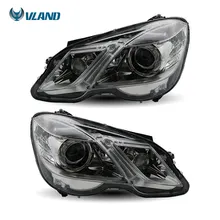Exploring the Versatility of Rear View Mirrors
The rear view mirror is an essential component of vehicle safety, providing drivers with a clear view of the area behind their vehicle. This critical piece of automotive equipment comes in various forms, each designed to cater to specific viewing needs and vehicle types. In this comprehensive guide, we delve into the different aspects of rear view mirrors, from their types to their applications and features.
Types of Rear View Mirrors
Rear view mirrors are not one-size-fits-all; they vary significantly in design and functionality. The traditional auto rear view mirror is designed for standard rearward vision, while side rear view mirrors enhance the driver's peripheral vision on both sides of the vehicle. Innovations such as the automatic dimming rear view mirror have emerged, which reduce glare from headlights behind the driver, improving nighttime driving comfort. For those seeking advanced technology, the digital rear view mirror offers a high-definition display that can provide a broader, unobstructed field of view compared to conventional mirrors.
Applications and Features
The primary application of rear view mirrors is to aid in visibility. Whether it's a car rear view mirror or a more specialized back view mirror car accessory, these mirrors serve to enhance safety by allowing drivers to monitor their surroundings without turning their heads. Features such as adjustability, shatter-proof materials, and anti-glare coatings are common among these mirrors, ensuring that they meet the diverse needs of drivers. The rearview mirror adhesive plays a crucial role in the secure mounting of these mirrors, ensuring they remain fixed in place even during rough driving conditions.
Materials and Advantages
Rear view mirrors are crafted from a variety of materials, each selected for its durability and clarity. The back of a mirror is typically made from impact-resistant materials that can withstand vibration and minor impacts. The reflective surface itself is often a high-quality glass or sometimes a polished metal, ensuring a clear and undistorted image. The advantage of using such materials is the longevity and reliability of the mirror, which is crucial for consistent safety on the road.
Choosing the Right Rear View Mirror
Selecting the appropriate rear mirror for your vehicle involves considering the mirror's compatibility with your car and your personal driving needs. For instance, an auto dimming rear view mirror might be ideal for those who frequently drive at night, while a car rear view mirror auto dimming feature is a smart choice for drivers looking for convenience and enhanced visibility. It's important to assess the size, shape, and attachment method of the mirror to ensure a proper fit for your vehicle.
Conclusion
In conclusion, the rear view mirror is a pivotal safety feature in any vehicle, offering a range of options to suit different preferences and requirements. From the basic automobile rear view mirror to sophisticated automatic rear view mirrors, there is a mirror to enhance the driving experience for every vehicle owner. When considering a replacing rear view mirror, it's essential to weigh the features and benefits of each type to make an informed decision that will contribute to a safer driving experience.









































 浙公网安备 33010002000092号
浙公网安备 33010002000092号 浙B2-20120091-4
浙B2-20120091-4